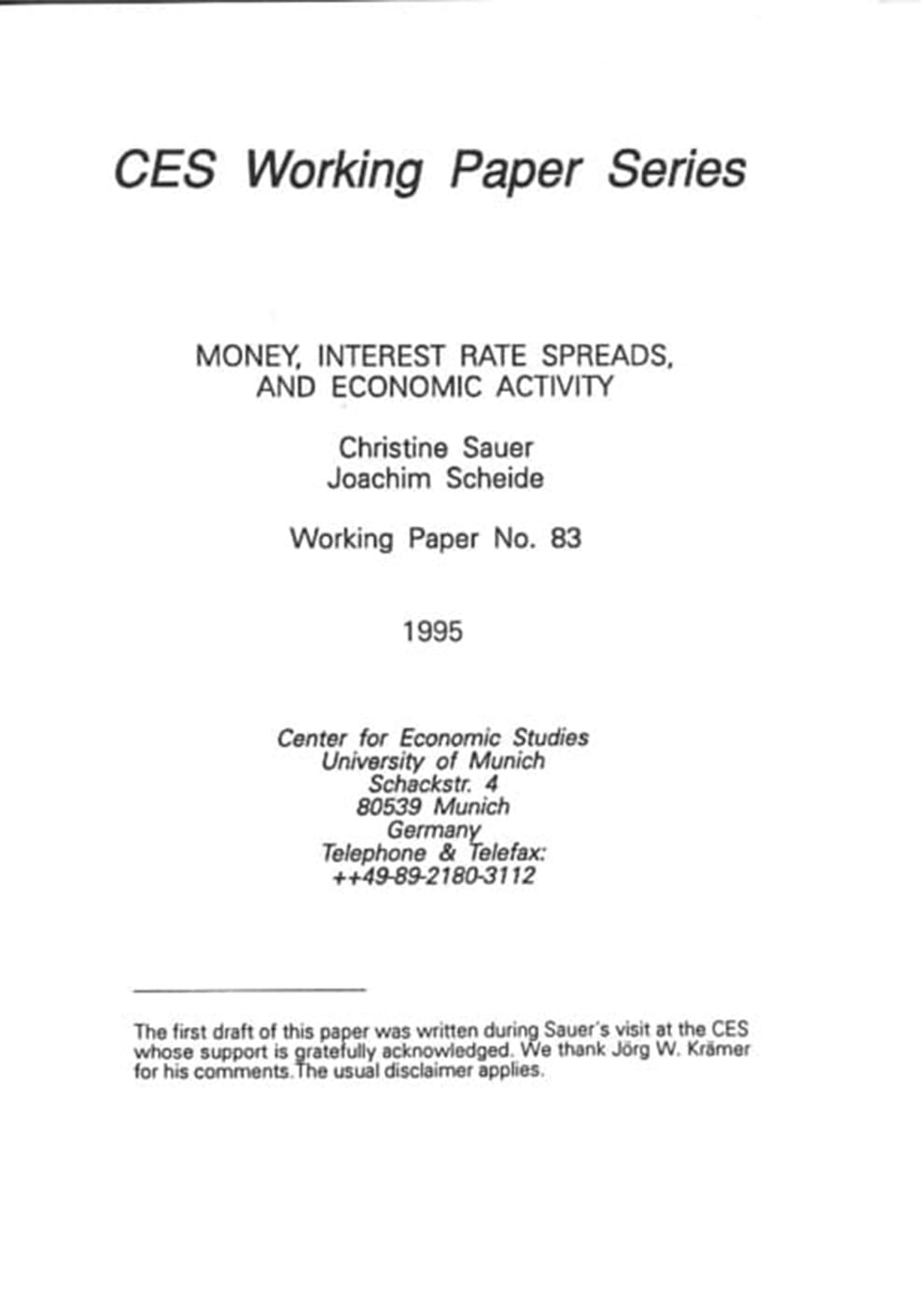Money, Interest Rate Spreads, and Economic Activity
CES, Munich, 1995
CES Working Paper No. 83

Numerous empirical studies for industrial countries have shown that the term structure of interest rates is a good indicator for future output growth. This paper addresses the question whether the interest rate spread contains any additional predictive power if information on the money stock is already included in the model. A multivariate error-correction framework is applied to three large European economies - France, Germany, and ltaly. The importance of various (real) monetary aggregates and the term structure is investigated with Granger causality tests. The models also include the terms of trade as an indicator of real disturbances. The evidence concerning the marginal information content of the interest rate spread is mixed. For France and ltaly, the variable does not improve the results of the basic model whereas it plays a significant role in the case of Germany. We conclude that policy makers and market participants should check carefully whether the term structure can improve business cycle forecasts. Regardless of its indicator qualities, however, the variable should not be viewed as a possible intermediate target for monetary policy. The term structure does not provide an anchor for the price level and. thus, is not an alternative to monetary targeting.